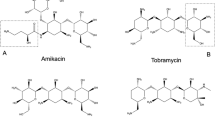Abstract
Gram-positive bacteria, notably coagulase negative staphylococci, have become an important cause of infection in neonates. Furthermore, many of these pathogens are now resistant to multiple antibacterial agents. Teicoplanin, a glycopeptide antibiotic, is active against a broad range of Gram-positive pathogens, including methicillin-resistant staphylococci. It has advantages over vancomycin in terms of tolerability, with a lower propensity to cause nephrotoxicity and anaphylactoid-like reactions, and in terms of ease of administration and monitoring requirements. The clinical utility of teicoplanin in neonates with Gram-positive infections has been investigated in several noncomparative studies. Clinical and bacteriological response rates in 173 neonates treated with teicoplanin 8–10 mg/kg intravenously or intramuscularly once daily after a loading-dose regimen of 10–20 mg/kg per day have ranged from 80%–100% and 83%–100%, respectively. Few adverse events related to teicoplanin have been reported in this patient population.
Conclusion Teicoplanin (8–10 mg/kg) administered intravenously or intramuscularly once daily after a loading-dose regimen of 15–20 mg/kg per day appears to be an effective and well tolerated treatment for Gram-positive infections in neonates.
Similar content being viewed by others
Author information
Authors and Affiliations
Additional information
Received: 4 November 1995 / Accepted: 30 August 1996
Rights and permissions
About this article
Cite this article
Fanos, V., Kacet, N. & Mosconi, G. A review of teicoplanin in the treatment of serious neonatal infections. Eur J Pediatr 156, 423–427 (1997). https://doi.org/10.1007/s004310050629
Issue Date:
DOI: https://doi.org/10.1007/s004310050629



